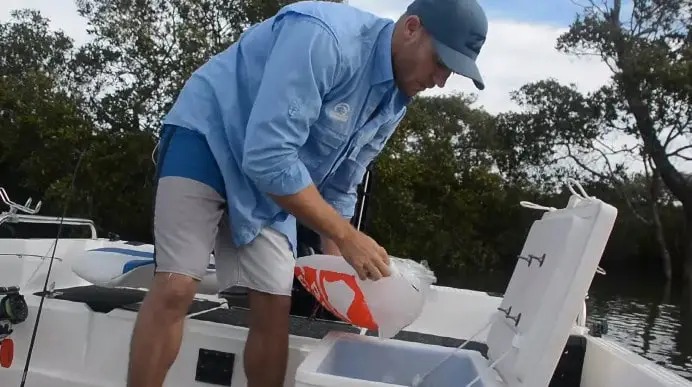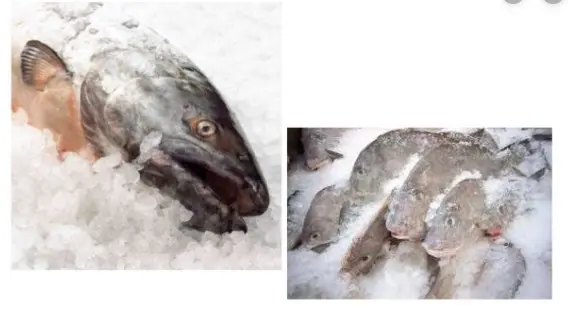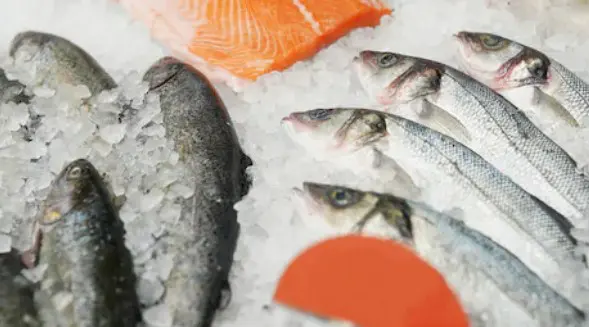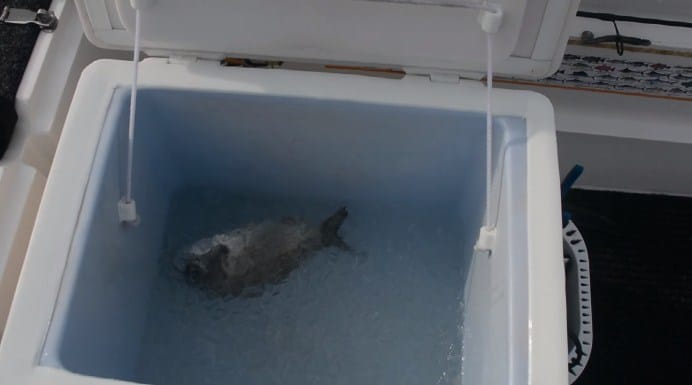How Long Can You Keep Fish on Ice?
If you are fishing in freshwater, it’s important to know that fish will begin to deteriorate before it dies. Keeping fish alive as long as possible in a keep sack or good live-well is a major step in ensuring that you have a fine-tasting fish.
After the fish dies, you need to handle it properly by gutting them immediately to prevent bacteria and intestinal liquids from touching the flesh. When you gut fish, it enables them to bleed, making sure that blood that promotes deterioration gets out of its body.
It’s best to keep fish on ice to minimize bacterial growth when you are fishing in warm water. Here are more details of how long you can keep fish on ice.
Icing fish

While fishing, the best way to keep fish fresh after you have gutted it is by icing. The good thing about crushed ice is that it packs pretty closely, cools quickly, and will keep fish colder than when you are using frozen bottles of water or blocks of ice.
After you are through gutting the fish, rinse them with cold water and keep them in crushed ice. But, avoid letting fish soak longer even while using icy water.
The same method should be used at the cleaning table, make sure the fish is iced. After cleaning the fish, place them in iced water. Once you see that the fish is chilled, rinse it, rub it dry with a towel, cover it with cling wrap, and insert it in crushed ice.
Crushed ice will preserve your fish for a minimum of five days, but the table quality of the flesh declines a bit each day.
Supper chilling method

Another method popular with fishers while in the field is called supper chilling. If you super-chill fish that has already being gutted can be preserved in ice for at least five days or more days. Fillets that have been stored properly can still be in great condition for up to five days.
For you to super-chill the fish, you have to place crushed ice at the bottom of an insulated cooler box. The drain should be open and take another container so that you can mix crushed ice with thick ice cream salt at the ratio of 20:1. if you have an average-sized cooler box, consider mixing a pound of salt with 20 pounds of ice.
Refrigeration

Once you are done with fishing and you have gone home, you can keep your fish in the refrigerator. Most refrigerators that are in perfect condition will keep the temperature at around 40°F. The ideal way to keep your fish in a refrigerator is to package them.
Then turn the thermostat of your fridge to the freezing point, but you must note that this temperature might freeze other foods you are keeping in the refrigerator. Alternatively, you can do the following to keep your fish:
-
The lid for the basin fits over half for a work area. Place the fish in crushed ice that is in a bowl.
-
Wrap the fish in a cling wrap, then place and cover them with ice.
-
Cover the bowl using a cling wrap.
-
Drain the melted water often so that the fish doesn’t soak in that water.
Freezing the fish
Freezing affect the quality of the fish because of oxidation and dehydration. There is what is known as a freezer burn that is characterized by the fish getting whitish fresh, which is caused by dehydration.
Freezer burn is attributed to utilizing the wrong wrap or you didn’t wrap the fish properly. If the wrapping fails to seal in moisture properly, the fish will lose moisture, resulting in it getting a whitish tough flesh.
Oxidation comes because of improper packaging. It’s either you used the wrong wrap or you didn’t remove air from the packaging material before freezing the fish. This causes the oxygen to mix with oils and polyunsaturated fats in the flesh. As a result, the fats get stale in the presence of oxygen.
Therefore, it’s essential to use the right packaging materials at all times. Aluminum foil is one of the most used packaging materials though it can get punctured easily. You can use it as the last wrap after covering the fish with cling wrap. Cling wraps have polyvinylidene chloride, that forms an obstacle and clings to fish, removing air pockets.
While wrapping fish in cling wrap, squeeze out air from the wrap. Then you can use another layer of cling wrap to force out more air. Lastly, place a wax-coated freezer wrap and write the fish type, the date it was frozen, and the size of the fish.

